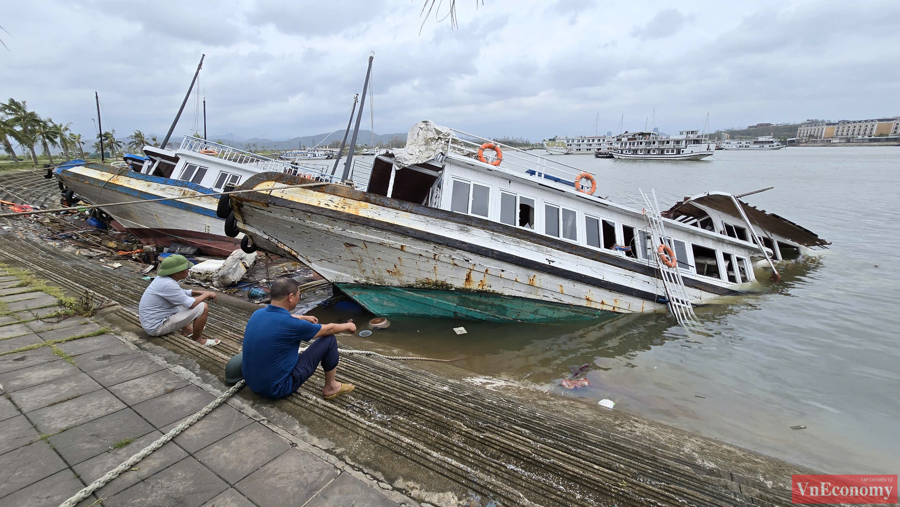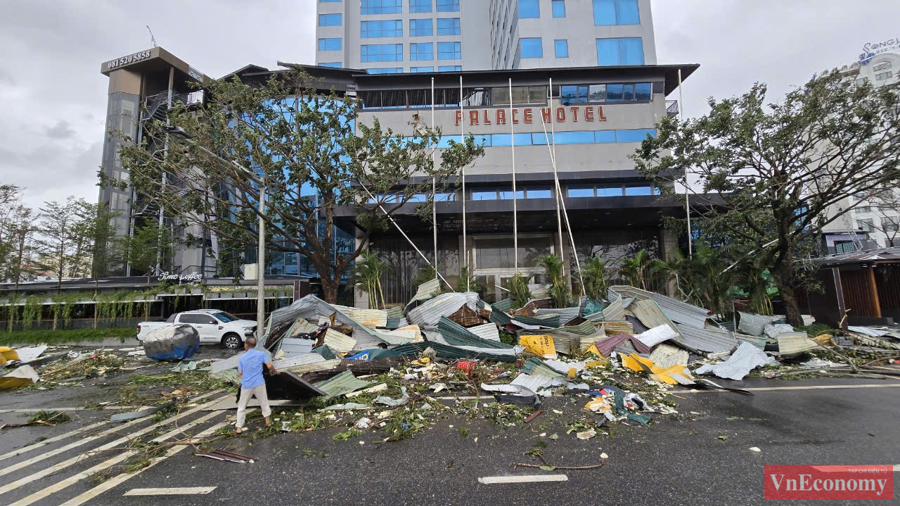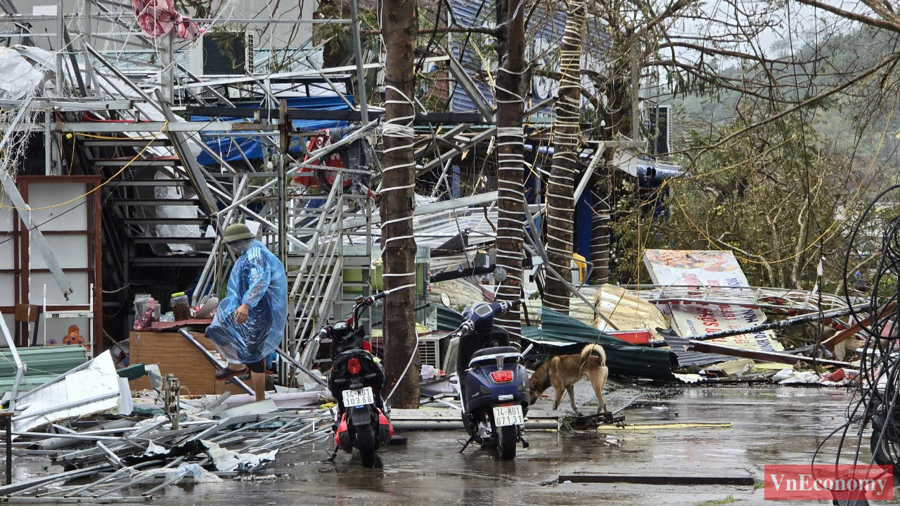Contents
Typhoon Yagi to Vietnam: A powerful tropical storm that recently swept through Northern Vietnam in 7 September 2024, has left a significant impact on the region, particularly its tourism sector. With heavy rains, strong winds, and flooding affecting numerous provinces, the typhoon has disrupted travel plans, damaged infrastructure, and caused safety concerns for both locals and tourists. This article takes a closer look at how Typhoon Yagi has affected tourism in Northern Vietnam, the immediate response from authorities and businesses, and the future outlook for the region’s recovery.
1. The Impact of Typhoon Yagi on Northern Vietnam
Typhoon Yagi, the third major tropical storm to hit Vietnam this year, made landfall in the northern provinces, bringing heavy rains, winds of up to 100 km/h, and widespread flooding. Provinces such as Quang Ninh, Hai Phong, and Lang Son were among the hardest hit, with landslides, road closures, and power outages reported in many areas. The storm also caused significant disruptions in Hanoi, the capital city, which is a central hub for tourists visiting Northern Vietnam.
Damage to Infrastructure and Tourist Attractions

Typhoon Yagi to Vietnam 2024: Tuan Chau Port, Halong Bay
The typhoon caused severe damage to infrastructure, including roads, bridges, and power lines. In popular tourist destinations such as Ha Long Bay and Cat Ba Island, boats were grounded, and tours were canceled due to safety concerns. Several resorts and hotels reported flooding, and some had to evacuate guests to safer locations.
On September 8, at Tuan Chau Port, reports indicated that 23 tourist cruise ships sank following the landfall of Typhoon Yagi. Tuan Chau Port, covering an area of over 1.7 million square meters and accommodating more than 2,000 ships, is one of the three main ports welcoming tourists to Ha Long Bay.
The famous limestone karsts of Ha Long Bay, a UNESCO World Heritage site, also saw rockfalls and debris, prompting authorities to close parts of the bay temporarily.
Disruption of Travel Plans and Evacuations

Typhoon Yagi to Vietnam 2024: Halong City
Travel plans for thousands of tourists were disrupted due to flight cancellations, road closures, and the temporary suspension of railway services. In particular, Quang Ninh and Hai Phong, which host popular destinations like Ha Long Bay and Cat Ba Island, saw a significant drop in visitor numbers as tourists either canceled or rescheduled their trips. Many local tourists opted to evacuate early, and international visitors found themselves stranded as airports were closed and transportation halted.
On September 8, Sapa announced the suspension of all outdoor tourism activities and the temporary closure of historical sites and scenic spots to visitors until further notice. Due to the impact of Typhoon Yagi, many roads and spillways in the area have been damaged, creating unsafe traffic conditions.
Similarly, Cao Bang province has temporarily halted all passenger transport services, including buses, fixed-route vehicles, taxis, and contract vehicles, starting from September 9, 2024, until further notice.
2. The Typhon Yagi to Vietnam: Flooding Updates

Typhoon Yagi to Vietnam 2024: Halong City
In the wake of Typhoon Yagi, Northern Vietnam is grappling with widespread flooding and extensive damage across several provinces. Heavy rainfall, triggered by the typhoon, has inundated large areas, particularly in Quang Ninh, Lang Son, Yen Bai, Thai Nguyen and Cao Bang. Many rivers have overflowed their banks, causing severe flooding in both urban and rural regions. As of now, thousands of homes have been submerged, with reports of significant damage to infrastructure, including roads, bridges, and power lines. In some of the worst-hit areas, floodwaters have reached up to two meters, displacing many residents and disrupting daily life.
Emergency response teams have been deployed to rescue stranded individuals and provide relief to those affected. The government has mobilized resources, including military personnel and equipment, to assist in evacuation efforts and deliver essential supplies such as food, water, and medicine to flooded areas. However, the challenging terrain and continuous rainfall are complicating rescue operations, and many areas remain inaccessible due to landslides and road blockages. In addition, the flooding has forced the closure of schools, businesses, and public services, impacting the local economy and creating uncertainty for the future.
Local authorities have issued warnings for continued heavy rain and potential landslides, advising residents in vulnerable areas to remain vigilant and follow safety guidelines. Efforts are also underway to reinforce dikes, clear blocked waterways, and repair damaged infrastructure to mitigate further risks. Meanwhile, the tourism sector has been hit hard, with many destinations like Ha Long Bay and Sapa temporarily shutting down. The immediate focus is on ensuring the safety of residents and tourists, but the longer-term challenge will be rebuilding and restoring normalcy in a region already struggling with the economic impacts of recurrent natural disasters.
3. Response from Authorities and Local Businesses
The local authorities acted swiftly to mitigate the impact of Typhoon Yagi to Vietnam on residents and tourists. In the days leading up to the typhoon, they issued warnings, evacuated people from high-risk areas, and prepared emergency shelters. The government mobilized resources, including rescue teams and medical personnel, to ensure the safety of those affected by the storm.
Measures Taken by Local Tourism Authorities
The Ministry of Culture, Sports, and Tourism, in collaboration with local tourism departments, quickly set up emergency response centers to assist tourists in need. These centers provided real-time information about the storm, evacuation routes, and safety measures. Tourism businesses, such as hotels, travel agencies, and tour operators, were also advised to prioritize the safety of their guests by halting operations and assisting with evacuations where necessary.
Support from the Tourism Industry
Tourism businesses played a crucial role in ensuring the safety and comfort of tourists during the typhoon. Hotels and resorts offered extended stays at discounted rates or even free accommodations to stranded travelers. Travel agencies provided alternative travel arrangements, such as rescheduling tours and flights, and some offered refunds or credits for future travel. Local guides and volunteers stepped in to help tourists navigate the challenges posed by the storm, from finding safe shelter to arranging emergency transportation.
4. Long-Term Impact on Tourism in Northern Vietnam
The tourism industry in Northern Vietnam, which contributes significantly to the local economy, is expected to face challenges in the coming months. The immediate impact of Typhoon Yagi has been a significant decrease in tourist numbers due to safety concerns and travel disruptions. However, the long-term effects could be more profound, affecting the perception of Northern Vietnam as a safe travel destination.
Reputation and Recovery Challenges
The repeated occurrence of typhoons and flooding in the region could harm its reputation among international travelers. Tour operators and travel agencies may need to reassess their strategies to attract tourists back to the region, emphasizing safety, resilience, and the unique experiences that Northern Vietnam has to offer. Recovery efforts will likely involve significant investment in rebuilding damaged infrastructure and restoring natural attractions like Ha Long Bay to their former glory.
Opportunities for Sustainable Tourism Development
Despite the challenges, Typhoon Yagi also presents an opportunity for Northern Vietnam to focus on sustainable tourism development. Rebuilding efforts could prioritize eco-friendly infrastructure, enhanced disaster preparedness, and community-based tourism initiatives that benefit local residents. By promoting responsible tourism practices, Northern Vietnam can attract a more conscientious traveler demographic and build a more resilient tourism industry.
5. Future Outlook and Preparedness
The future of tourism in Northern Vietnam will depend largely on the region’s ability to recover quickly and efficiently. This involves not only repairing physical damage but also rebuilding trust among tourists. Transparent communication, efficient disaster response, and proactive marketing strategies will be key to restoring confidence in the region’s tourism offerings.
Investing in Disaster Resilience
Local authorities and tourism stakeholders must invest in disaster resilience, including better infrastructure, early warning systems, and emergency response protocols. By demonstrating a commitment to safety and preparedness, Northern Vietnam can reassure both domestic and international tourists that they can enjoy the region’s unique attractions without undue risk.
Promoting Northern Vietnam’s Unique Offerings
In the face of adversity, it is essential to highlight Northern Vietnam’s unique cultural, natural, and historical attractions. Marketing campaigns can focus on the resilience and beauty of the region, showcasing how the local communities and landscapes have weathered the storm and emerged stronger. Collaborations between the government, local businesses, and international tourism bodies will be crucial in these efforts.
Conclusion
Typhoon Yagi to Vietnam has dealt a significant blow to Northern Vietnam’s tourism sector, but it also offers a chance to rebuild with a focus on sustainability, safety, and resilience. While the immediate impact has been severe, with damaged infrastructure and disrupted travel plans, the long-term outlook depends on the region’s ability to recover quickly and attract tourists back to its beautiful landscapes and vibrant culture. By investing in disaster preparedness and sustainable tourism practices, Northern Vietnam can emerge stronger from this challenge and continue to be a compelling destination for travelers worldwide.
I love traveling and have been working in tourism industry since 1996. Vietnam is my homeland so I would like to share with you my experience to discover this destination best!
